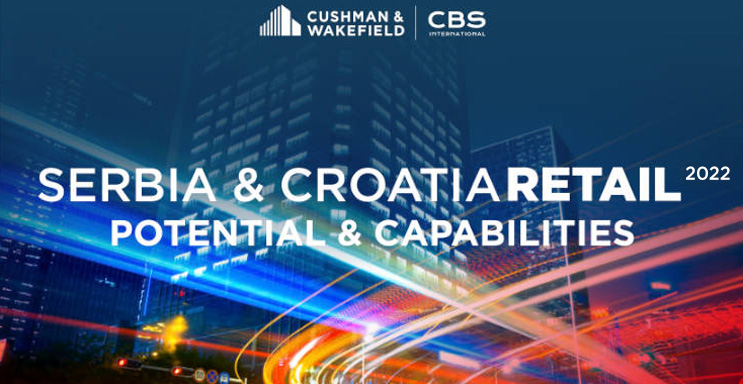
The Growing Popularity of Mixed-Use Properties
A mixed-use development represents the fusion of multiple asset classes within a single complex, not a new concept, but its popularity has surged in recent years, potentially reshaping the landscape of real estate.
In the realm of real estate, convenience reigns supreme. Whether it’s the smart building systems or the speedy delivery of online purchases, consumers want immediate access to convenience. While mixed-use properties have long existed, the trend of combining two or more asset classes within a single development has gained significant popularity in recent times. At its core, mixed-use properties aim to provide seamless access to everyday essentials. These essentials encompass a wide spectrum, ranging from morning coffee and nutritious breakfast options to fitness centres and medical facilities.
Here, we explore the nuances of mixed-use properties, particularly exploring the interplay between office and retail assets and their impact on multifamily properties.
Varieties of Mixed-Use Developments
Residential and/or Office with Retail
Proximity to retail amenities is very important for both residential and office properties. In densely populated areas, the presence of retail component within residential complexes is important. From grocery stores and entertainment venues to pharmacies and self-care services, retail services play a vital role in catering to residents’ needs. For office workers, nearby retail facilities provide convenience during breaks, offering dining options and access to everyday essentials.
Office with Residential
The synergy between office and multifamily assets is predominantly driven by employment dynamics. Businesses seeking office spaces are inclined to choose markets with a robust population base conducive to their industry. These locations offer businesses access to a larger talent pool and a broader clientele base. Additionally, coworking spaces existing alongside residential units meet a growing need of many professionals nowadays.
Hotel with Retail and Office
An intuitive combination, an integrated structure that seamlessly combines a hotel with retail components like shops, entertainment venues, restaurants, and business centres, along with office space within the same complex. This design boosts the hotel’s profitability by attracting new clients with its innovative and exciting amenities, while also providing companies the convenience of having hotel services readily available.
Horizontal and Vertical Mixed-Use Developments
Mixed-use properties are typically constructed either horizontally or vertically:
Horizontal Developments:
This type of development refers to the complex in which each building has its own different purpose. It can feature residential buildings, retail formats, office buildings, and entertainment or leisure facilities. Additionally, the complex usually features green areas, children’s playgrounds, sports facilities, as well as some public and private spaces. While horizontal mixed-use developments exist in urban settings, they are more prevalent in suburban areas due to the availability of space.
Vertical Buildings:
In densely populated urban areas where space is scarce, vertical mixed-use developments emerge as a viable solution. These structures, commonly found in major global cities like New York, Singapore, and Shanghai, integrate diverse property types within a single building. Typically, residential spaces usually take up the top floors, while ground-level is reserved for commercial establishments such as cafes, restaurants, shops, or gym. Office spaces are usually located between residential floors and ground floor dedicated to retail.
Benefits of Mixed-Use Properties
Beyond convenience, mixed-use properties offer several advantages to commercial real estate owners and investors:
Diverse Revenue:
By housing multiple asset types within a unified space, mixed-use properties attract a broad spectrum of tenants, enabling multiple revenue sources in one real estate asset. Depending on the property’s composition, tenants may include apartment residents, retail businesses, and office occupants spanning various industries. This can lead to a more diverse community that improves property value.
Steady Cash Flow:
The broad appeal of mixed-use properties fosters a consistent revenue stream for owners. Moreover, the diverse tenant mix acts as a buffer, mitigating the impact of revenue fluctuation, as the loss of one occupant may have a minimal impact on revenue.
Sustainability:
Mixed-use properties promote sustainability by encouraging resource conservation and pedestrian-friendly environments. These developments often incorporate green spaces, parks, and recreational areas, fostering a sense of community among residents while reducing reliance on motor vehicles.
Convenience:
These properties provide direct access to shops, restaurants, employment, and public transportation. They also optimize land use by layering community functions for maximum impact.
The future of mixed-use properties
Looking at commercial real estate, mixed-use properties emerge as a cornerstone of innovation and adaptation. The fusion of different asset classes within a single space not only satisfies modern consumers’ needs for practicality, but also unlocks countless opportunities for owners and investors. With an emphasis on seamless integration and holistic experiences, these developments are poised to redefine the urban living and working environment. By nurturing vibrant communities and fostering sustainable practices, mixed-use developments align with evolving needs and aspirations of society.
Furthermore, the diversity of mixed-use properties ensures resilience to economic changes and market fluctuations. As traditional boundaries blur and interconnection becomes the norm, mixed-use development offers a dynamic platform for growth and innovation across diverse industries. In essence, the future of mixed-use real estate is one characterized by synergy, sustainability and limitless potential.








